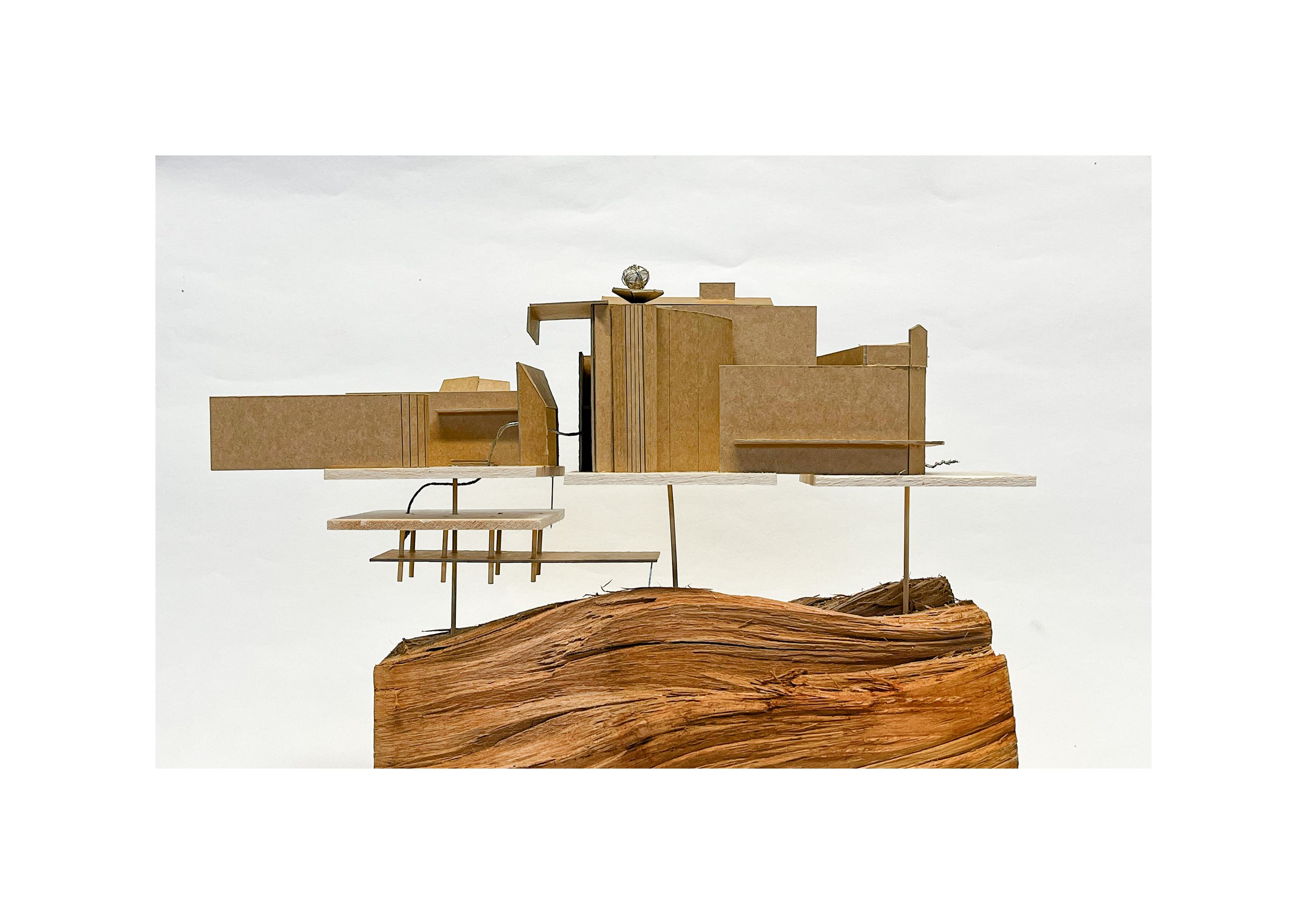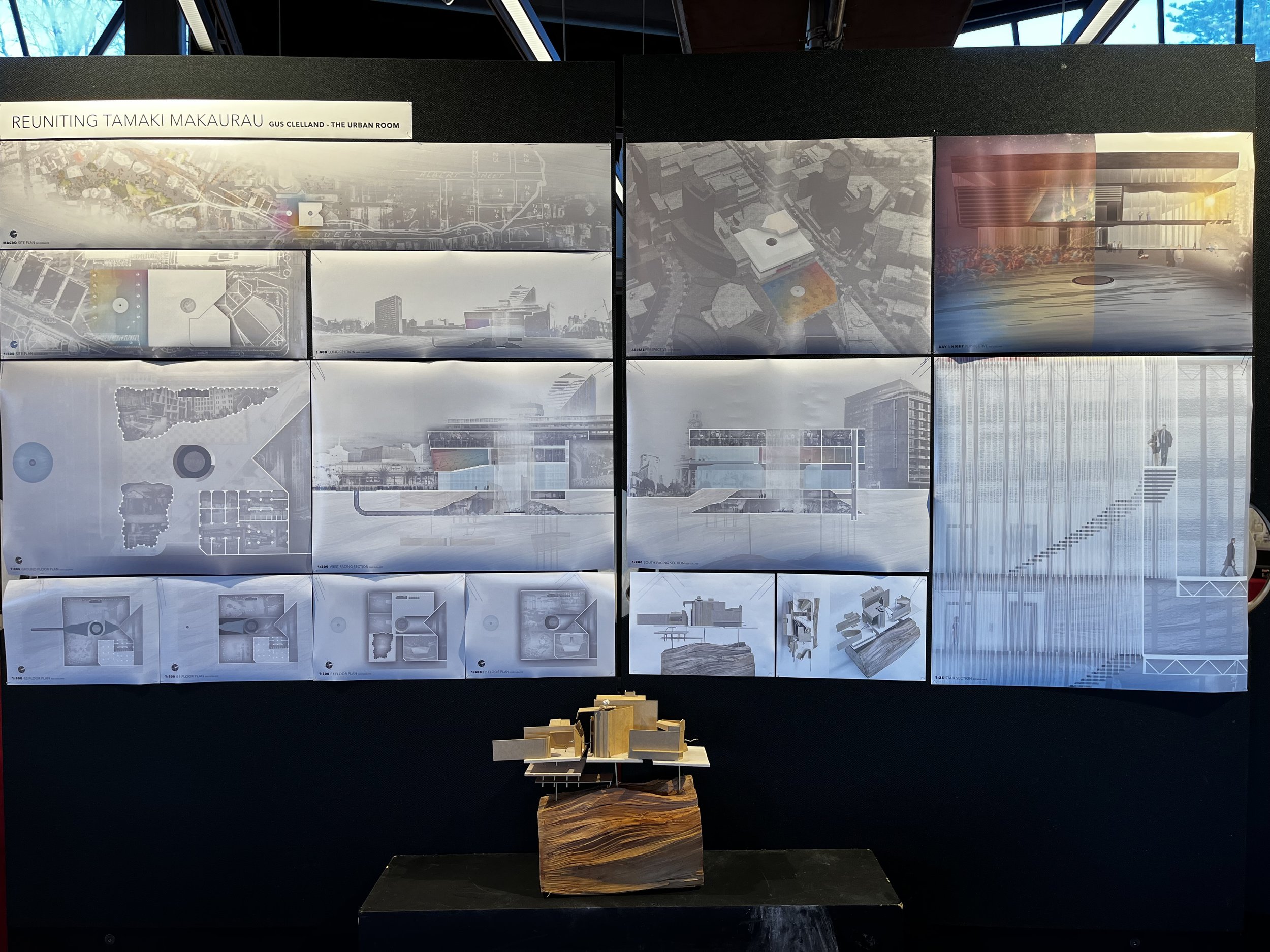
Reuniting Tāmaki Makaurau
The Urban Room
In the 1870’s, Te Waihorotiu was enclosed to become a drain and replace the canal that it had been turned into around the 1840’s. The stream with rich history was turned into nothing but a brick sewer with “a bit of seepage”. This, along with many other examples in Tāmaki Makaurau are examples of hidden history throughout the city covered up and unconsidered in previous developments. This project aims to reconnect the city with the deep history that lies beneath us. The concept of daylighting Te Waihorotiu will give opportunity to the public to understand and feel the past in the current time.




The design of this building started by considering the current feel of Aotea square, its spacial qualities and the current Metro Center building. Discovering what myself and others felt when occupying the space realised the claustrophobic experience and disconnect from the surroundings. I looked at how I can open up space to be inviting and create a connection to the city and its history. The focus was to expose Te Waihorotiu and draw people into a place which presents the historical significance behind the stream as well as other notable history of Tāmaki Makaurau.



The building opens up Aotea Square into the site of the old Metro Center, as you enter into the space from the square, you’re drawn down into a wide void with a large model of Auckland Central surrounded by Te Waihorotiu at the bottom. The void space is open to the exterior vertically through the roof allowing the model and Te Waihorotiu to be exposed to the weather and have rain fall in through the building. This, among other design features of the building connect the user and the space to Aotea Square and vice versa. It exposes a once covered up and forgotten piece of history in Tāmaki Makaurau and gives users an opportunity to explore and learn more about the city they inhabit.



